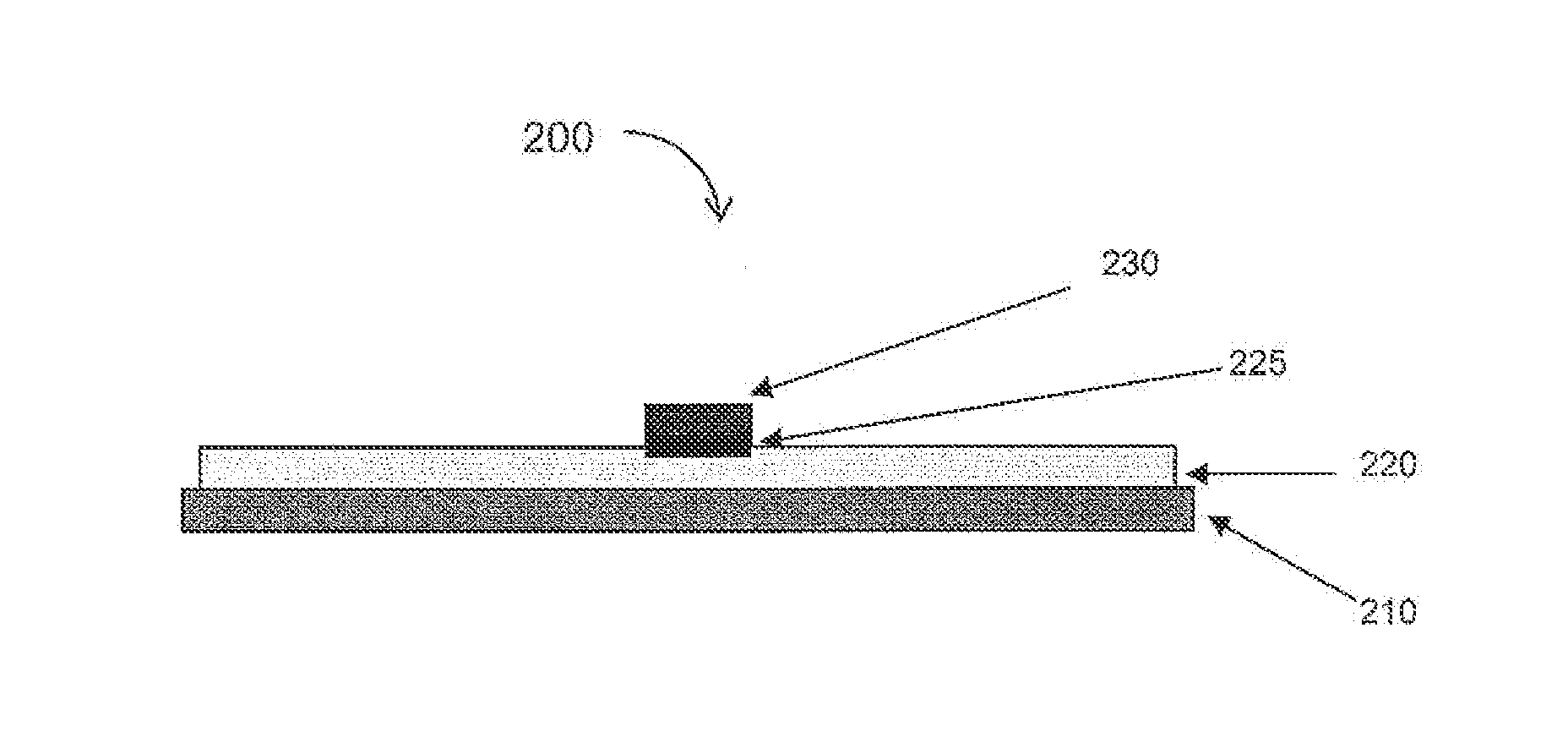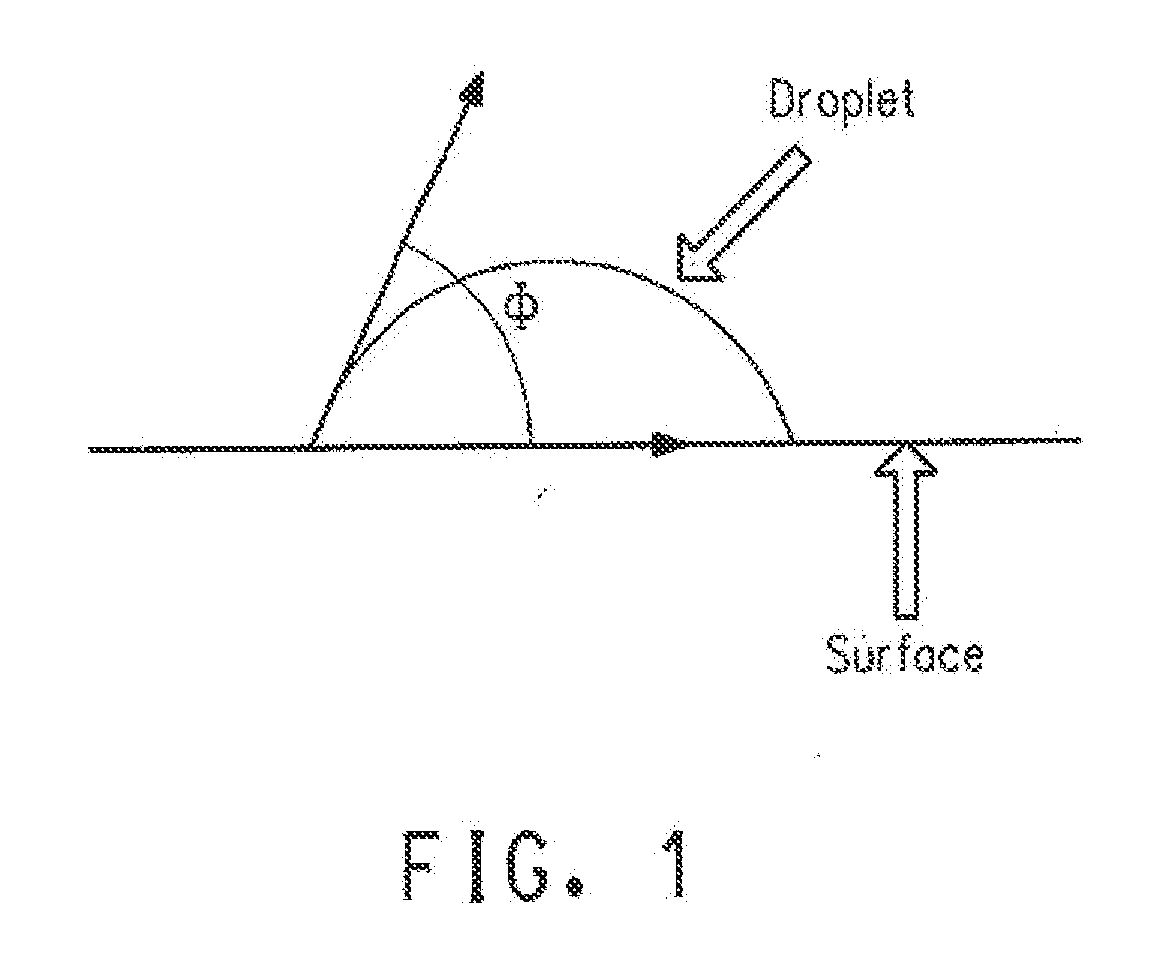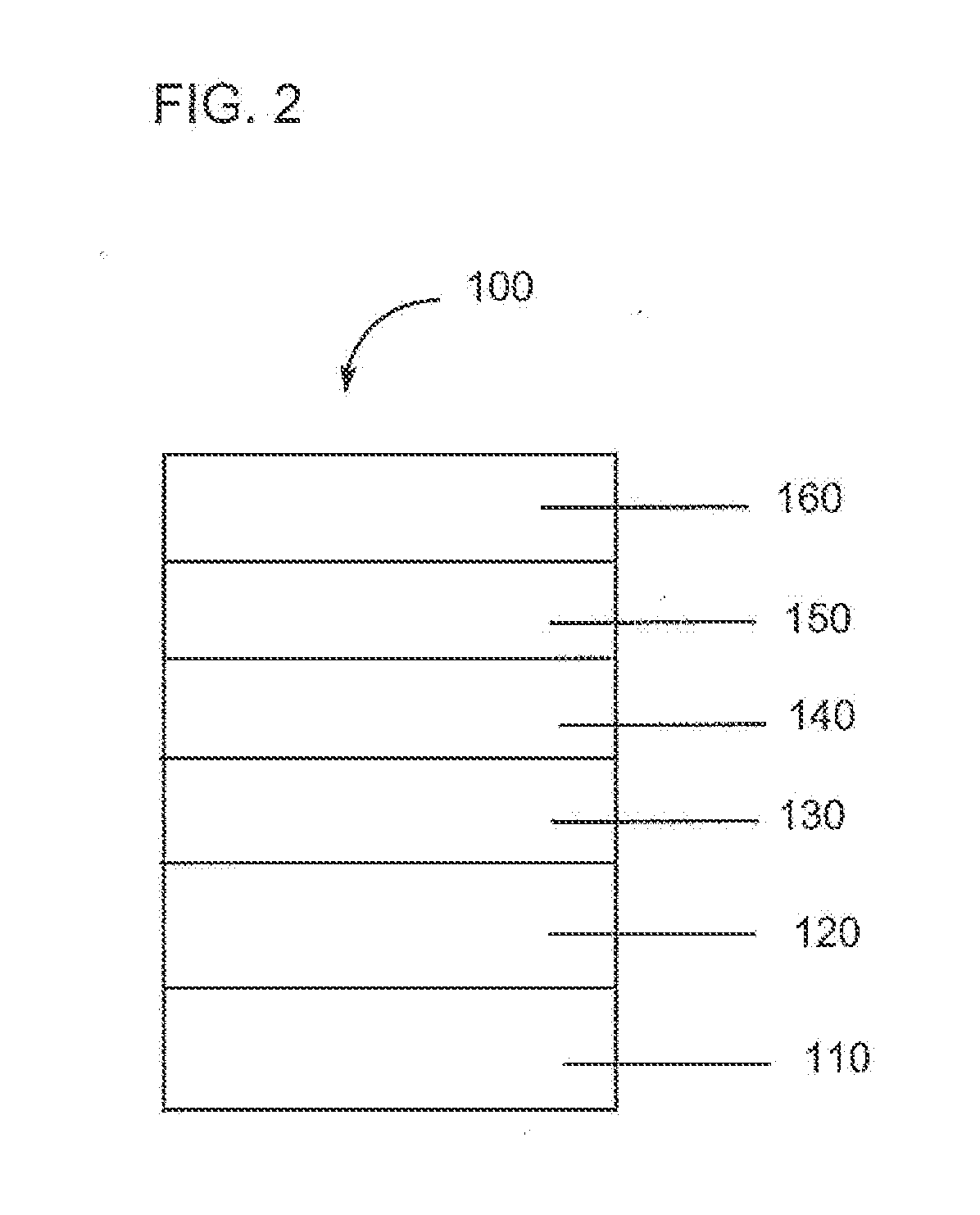Process and materials for making contained layers and devices made with same
a technology of containment layer and process, applied in the field of process for making an electronic device, can solve the problems of reducing the available emissive area of the pixel, affecting the quality of practical containment structure, and requiring certain modifications to manufacture tuft-color displays, etc., and achieve the effect of effectively removing the priming layer
- Summary
- Abstract
- Description
- Claims
- Application Information
AI Technical Summary
Benefits of technology
Problems solved by technology
Method used
Image
Examples
synthesis example 1
[0202]This example illustrates the preparation of Compound A.
Intermediate A1 (4-bromo-2-ethyl-4′-iodophenyl):
[0203]Under an atmosphere of nitrogen a 1 L two-necked, round-bottomed flask equipped with magnetic stirbar and condenser was charged with 62.64 g (450 mmol) of potassium carbonate, 200 mL H2O, 250 mL toluene, 46.64 g (30.0 mmol) of 4-bromo-2-ethyliodobenzene, 29.70 g (153 mmol) of 4-trimethylsilylbenzeneboronic acid. The resulting mixture was sparged with N2 for one hour. Tetrakis(triphenylphosphine)palladium(0) (5.20 g, 4.5 mmol) was then added and the solution was sparged for an additional 15 minutes. The reaction was heated to 90° C. for 20 hours. After cooling it to room temperature, the mixture was transferred to a separatory funnel. 200 mL of water and 200 mL of toluene was added. The layers were separated. The aqueous layer was extracted with additional toluene (200 mL). The combined organic layer was washed with water (200 mL) and dried over MgSO4. The product was pu...
synthesis example 2
[0207]This example illustrates the preparation of Compound C.
Intermediate C1:
[0208]
[0209]In the dry box the mixture of 2-(4-bromo-2-methylphenyl)-4,4,5,5-tetramethyl-1,3,2-dioxaborolane (6 g, 20.13 mmol), 2-iodotoluene (4.4 g, 20.13 mmol), Aliquat 336 (0.3 g), and Pd(PPh3)4 (1.16 g, 1.01 mmol) in degassed toluene (100 mL) was prepared. Outside dry box, the degassed Na2CO3 (6.40 g, 60.40 mmol in 50 mL of water) solution was added to the former mixture under nitrogen, and then the resultant mixture was stirred at 90° C. for 18 hrs. The organic layer was separated and the aqueous layer was extracted with ethyl acetate. The combined organic layers were dried over anhydrous MgSO4. Filtration, concentration of the filtrate, and then the silica column chromatography (hexane) provided the desired product, Intermediate C1 (2.6 g, 56% yield) as a viscous liquid.
Intermediate C2:
[0210]
[0211]In the dry box to the mixture of 4-bromo-2-methyl-1-(2-methylphenyl)benzene, Intermediate C1, (4.1 g, 15....
synthesis example 3
[0217]This example illustrates the preparation of Compound E.
Intermediate E1
[0218]
[0219]Under an atmosphere of nitrogen a 250 mL two-necked, round-bottomed flask equipped with magnetic stirbar and condenser was charged with 4-(2,4,4-trimethylpentan-2-yl)phenyltrifluoromethanesulfonate (3.756 g, 11.1 mmol), 4(tert-butoxycarbonylamino)phenylboronic acid (2.89 g, 12.2 mmol) K3PO4.H2O (5.868 g, 55.4 mmol), water (15 mL) and tetrahydrofuran (80 mL). The resulting mixture was sparged with N2 for thirty minutes. (dppf)2PdCl2 (0.453 g, 0.55 mmol) was then added and the solution was sparged for an additional 15 minutes. The reaction was heated to 90° C. for 20 hours. After cooling it to room temperature, the mixture was transferred to a separatory funnel. The layers were separated. The aqueous layer was extracted with additional THF (50 mL). The combined organic layer was washed with water (20 mL) and dried over MgSO4. The product was purified by column chromatography using hexane / methylene ...
PUM
| Property | Measurement | Unit |
|---|---|---|
| contact angle | aaaaa | aaaaa |
| contact angle | aaaaa | aaaaa |
| contact angle | aaaaa | aaaaa |
Abstract
Description
Claims
Application Information
 Login to View More
Login to View More - R&D
- Intellectual Property
- Life Sciences
- Materials
- Tech Scout
- Unparalleled Data Quality
- Higher Quality Content
- 60% Fewer Hallucinations
Browse by: Latest US Patents, China's latest patents, Technical Efficacy Thesaurus, Application Domain, Technology Topic, Popular Technical Reports.
© 2025 PatSnap. All rights reserved.Legal|Privacy policy|Modern Slavery Act Transparency Statement|Sitemap|About US| Contact US: help@patsnap.com



